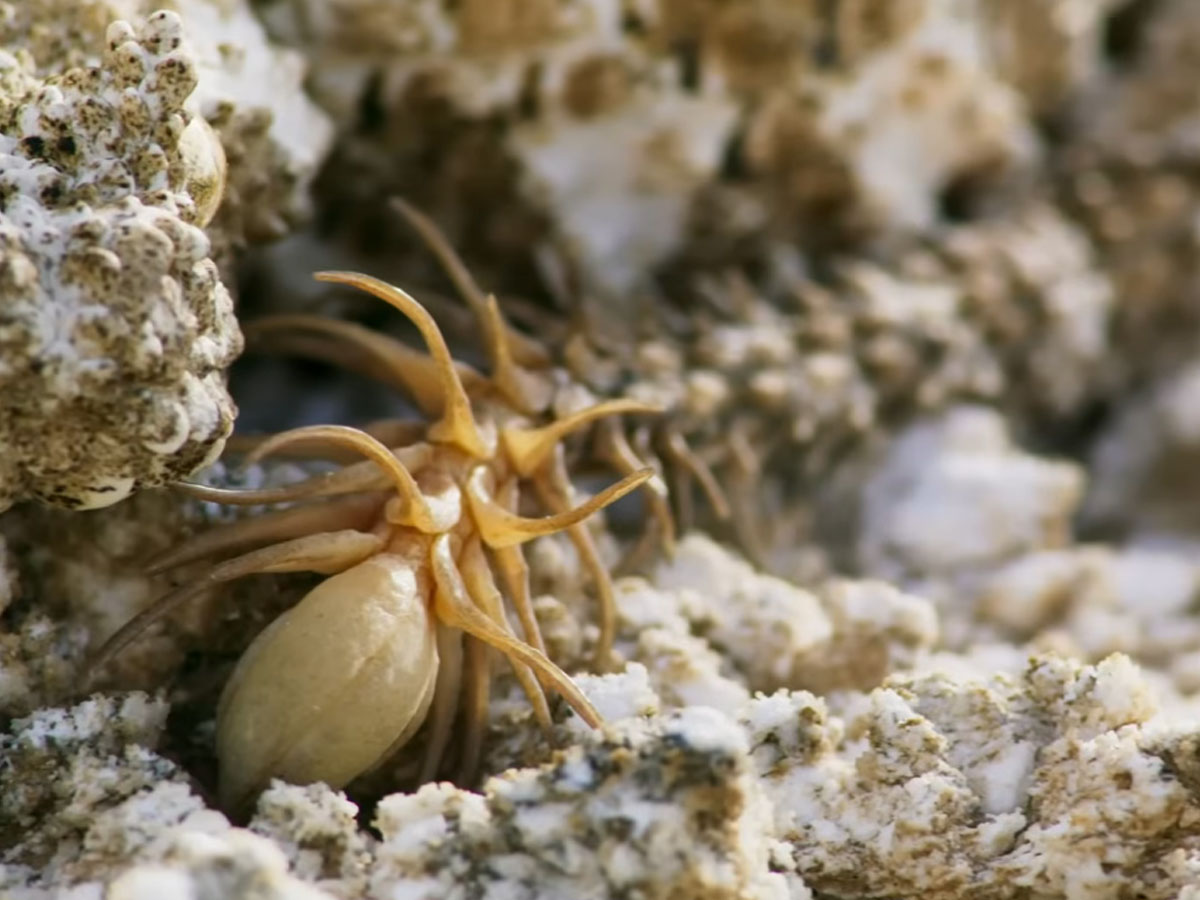Animals
This Venomous Snake Hunts Using A Fake Spider Tail - And It's Absolutely Terrifying
Years ago, scientists discovered one of the world's most bizarre venomous snakes — a viper that hunts using a tail shaped like a spider.
The snake, known scientifically as Pseudocerastes urarachnoides (commonly called the spider-tailed horned viper), exists in only one corner of the world. With its uniquely evolved tail, it mimics the movement of a spider to lure predators close — predators that quickly become prey.
This rare species belongs to the viper family and can grow up to around 2,3 feet (70 centimeters) in length. It's venomous, equipped with a hemotoxic venom, and is found only in western Iran, including the mountainous Zagros region. It prefers dry, rocky desert habitats with low vegetation and plenty of stones, blending in perfectly thanks to its natural camouflage.

BBC Earth
Due to its color patterns and rugged appearance, the snake looks almost indistinguishable from the desert landscape. But its most extraordinary feature is its tail. The tip of its tail splits and flattens, resembling the body and legs of a spider. Birds — its primary target — often mistake it for an actual spider. In a cruel twist, would-be predators become the prey.
By slowly moving its tail in a lifelike, spider-like motion, the snake creates a visual illusion that draws insect-eating birds close. Once the bird swoops down to grab the "spider," the snake strikes with deadly precision.
This strange species was first described back in 2006 by Iranian herpetologists, and its hunting method wasn't scientifically confirmed until 2012. It remains one of the rarest and most fascinating examples of aggressive mimicry in the animal kingdom, where an animal uses part of its body to impersonate an entirely different creature.
The snake, known scientifically as Pseudocerastes urarachnoides (commonly called the spider-tailed horned viper), exists in only one corner of the world. With its uniquely evolved tail, it mimics the movement of a spider to lure predators close — predators that quickly become prey.
This rare species belongs to the viper family and can grow up to around 2,3 feet (70 centimeters) in length. It's venomous, equipped with a hemotoxic venom, and is found only in western Iran, including the mountainous Zagros region. It prefers dry, rocky desert habitats with low vegetation and plenty of stones, blending in perfectly thanks to its natural camouflage.

BBC Earth
Due to its color patterns and rugged appearance, the snake looks almost indistinguishable from the desert landscape. But its most extraordinary feature is its tail. The tip of its tail splits and flattens, resembling the body and legs of a spider. Birds — its primary target — often mistake it for an actual spider. In a cruel twist, would-be predators become the prey.
By slowly moving its tail in a lifelike, spider-like motion, the snake creates a visual illusion that draws insect-eating birds close. Once the bird swoops down to grab the "spider," the snake strikes with deadly precision.
This strange species was first described back in 2006 by Iranian herpetologists, and its hunting method wasn't scientifically confirmed until 2012. It remains one of the rarest and most fascinating examples of aggressive mimicry in the animal kingdom, where an animal uses part of its body to impersonate an entirely different creature.








